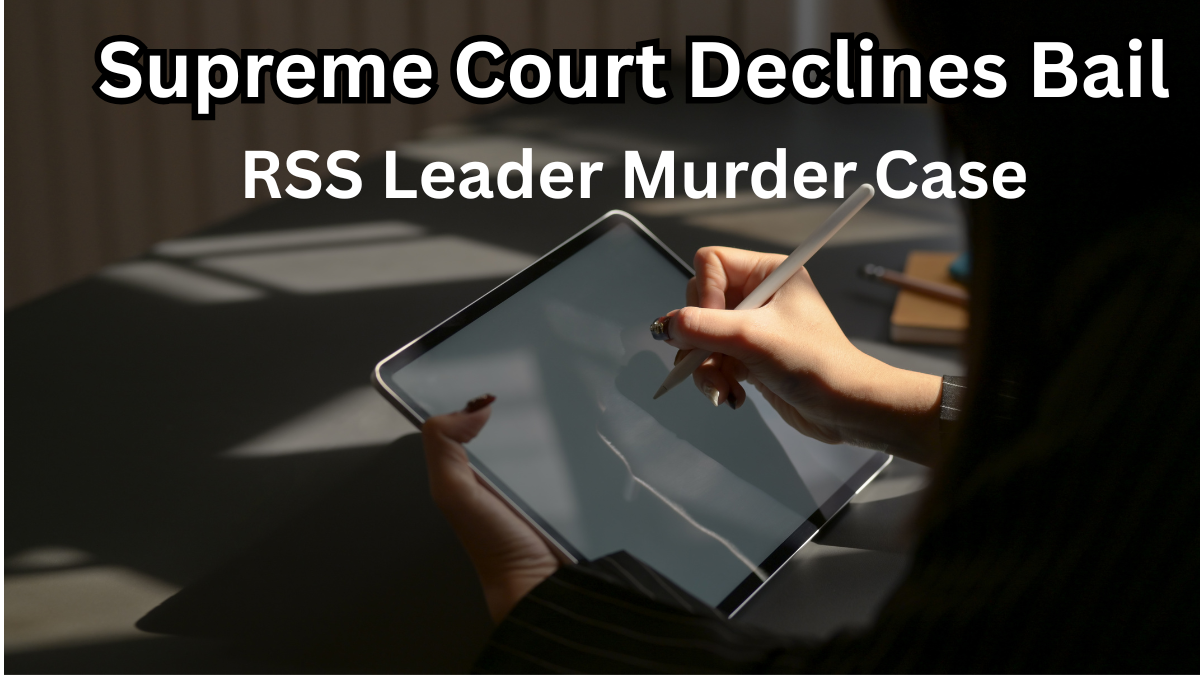New Delhi, April 2025 — In a significant development, the Supreme Court of India has refused to entertain the National Investigation Agency’s (NIA) special leave petitions challenging the bail granted to 17 members of the Popular Front of India (PFI) in the 2022 murder of RSS leader Srinivasan in Palakkad, Kerala.

What Did the Supreme Court Say?
A division bench comprising Justices Abhay S. Oka and N. Kotiswar Singh made it clear that the Kerala High Court, which granted bail nearly a year ago, holds the authority to cancel the bail if any of the conditions are violated.
“The petitioners are free to approach the special court for cancellation of bail based on the violations detailed in the affidavits,” the bench stated.
Key Points from the Supreme Court’s Observation:
-
The High Court had already granted liberty to the petitioners to move the special court.
-
The special court is considered a more appropriate forum for handling such bail matters.
-
The NIA retains the right to present new evidence or violations of bail conditions before the special court.
Why Was the NIA Seeking Cancellation?
During the hearing, Additional Solicitor General Raja Thakare, appearing for the NIA, argued that:
-
The accused had allegedly violated bail conditions.
-
They had also contacted key witnesses, which could hamper the investigation.
Conditions Imposed by the Kerala High Court
The Kerala High Court, on June 25, 2024, granted bail to 17 out of 26 accused PFI members. However, it came with strict bail conditions to ensure that the investigation wouldn’t be compromised.
Stringent Bail Conditions Imposed:
| Condition | Description |
|---|---|
| GPS Tracking | Accused must share real-time GPS locations with investigators |
| Cellphone Access | Keep their phones charged and active 24/7 |
| Travel Restrictions | Not permitted to leave Kerala |
| Passport Submission | Must surrender their passports |
| Court Appearance | Required to appear before the special court on schedule |
Background of the Case
The murder of RSS leader Srinivasan on April 16, 2022, triggered a nationwide debate on communal tensions and extremism.
Timeline of Events:
-
April 2022: Srinivasan was killed in Palakkad.
-
July & December 2022: Police filed chargesheets in two phases.
-
September 2022: The Centre directed the NIA to take over the investigation.
-
December 2022: The Centre cited a larger conspiracy with potential national and international ramifications.
-
2023: The NIA submitted a consolidated chargesheet and two supplementary ones.
-
Post-Chargesheet: Accused applied for bail, leading to the current scenario.
What the Centre Believes?
The central government and the NIA suspect a wider conspiracy involving:
-
Radicalization of PFI cadres.
-
Plans to instigate communal violence.
-
Alleged terror activities beyond Kerala, impacting national security.
Current Status of the Accused
-
Total Accused: 51 individuals
-
Granted Bail: 17 members
-
One Deceased
-
7 Absconding
-
Chargesheets Filed: Against remaining individuals in 2022 and 2023
What Happens Next?
While the Supreme Court has opted not to intervene, it clarified that:
-
The special court or the High Court can still cancel the bail if violations are proven.
-
The apex court’s refusal to entertain the petition won’t impact the decision-making power of lower courts.
FAQs
1. Why did the Supreme Court refuse to hear the NIA’s petition?
The Court felt that the Kerala High Court had already laid out a path for bail cancellation, and the NIA should approach the special court with evidence instead of seeking intervention from the Supreme Court.
2. What were the bail conditions for the accused PFI members?
They were required to share GPS data, remain in Kerala, surrender passports, and keep phones on at all times, among other conditions.
3. Is this the end of the road for the NIA?
Not at all. The Supreme Court has left the door open for the NIA to approach the special or high court again if fresh violations or evidence arise.
4. What is the significance of this case nationally?
The case goes beyond a single murder, as it involves suspicions of a larger conspiracy linked to radicalism and national security, making it highly significant in the eyes of law enforcement and the central government.
Click here to learn more
